Stuart Forster reports in the experience of taking a game drive in Hwange National Park, Zimbabwe.
Disclosure: Some of the links below and banners are affiliate links, meaning, at no additional cost to you, I will earn a commission if you click through and make a purchase.
Stuart toured and experienced a game drive in Hwange National Park as a guest of the Zimbabwe Tourism Authority, which did not review or approve this post.
The rains of late-March cause vegetation in Zimbabwe’s Hwange National Park to sprout and become denser. The lush green season is not regarded as an optimal time of year for viewing animals but, despite that, I was optimistic of sightings during a morning game drive.
Rising at 5.30 am so often feels like a difficult, reluctant chore. Yet that was by no means the case as I woke in a tented chalet at the Elephant’s Eye lodge. Excitement at the prospect of viewing wildlife meant I was sitting on the edge of my bed and searching for the gap in the mosquito net by the third ring of my phone’s alarm.
The African bush was still enveloped by darkness as I donned my olive equipment vest. Its pockets were packed with batteries, spare memory cards and a notepad: hopefully, at least some of the pages would be scrawled with the names of African animal and bird species by the time we returned. Hwange provides habitat to more than 100 different mammals, in excess of 400 bird species, nearly 200 types of grasses and 230 trees: surely even a poor day by local standards would impress a visiting Brit to whom seeing anything other than a cat or dog is out of the ordinary?
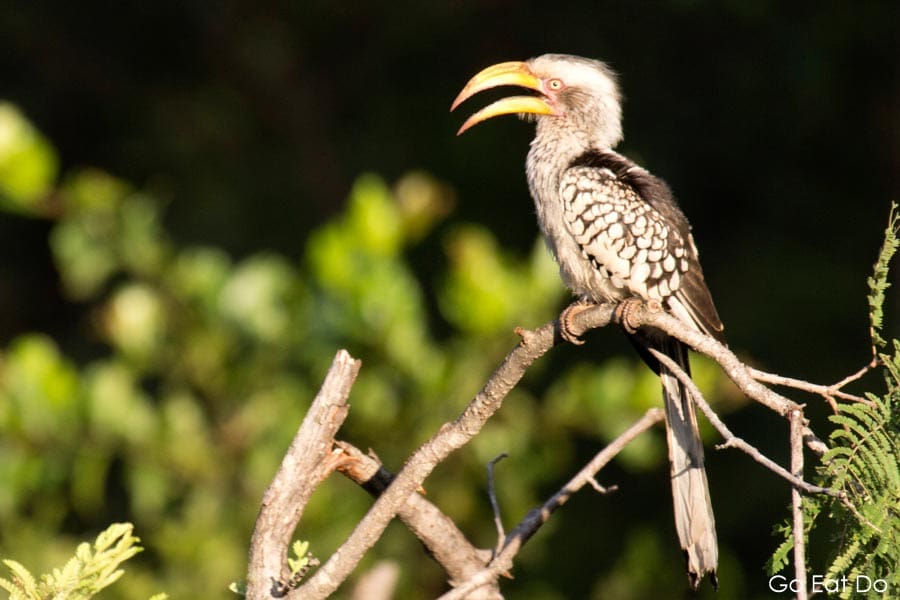
Viewing Africa’s Big Five
Birds were already chirping when I stepped onto the balcony with the sky lightening to blue. For a moment I hesitated before heading down the steps and walking to the lodge’s communal areas. Upon arrival Milton, the manager at Elephant’s Eye, mentioned that care is required: wild creatures have the habit of passing through the grounds. Concerns about the potential dangers of coming face-to-face with a lion or stepping on a black mamba were quickly outweighed by my burning desire for a cup of strong coffee.
Shepherd, a powerfully built man, introduced himself to the group as our driver. Before departing he explained that Hwange National Park is home to a full house of Africa’s Big Five.
That term came into being because lions, elephants, Cape buffalo, rhinos and leopards were regarded as the five most challenging of southern Africa’s mammals to track on foot, so given special status by the game hunters of bygone times.
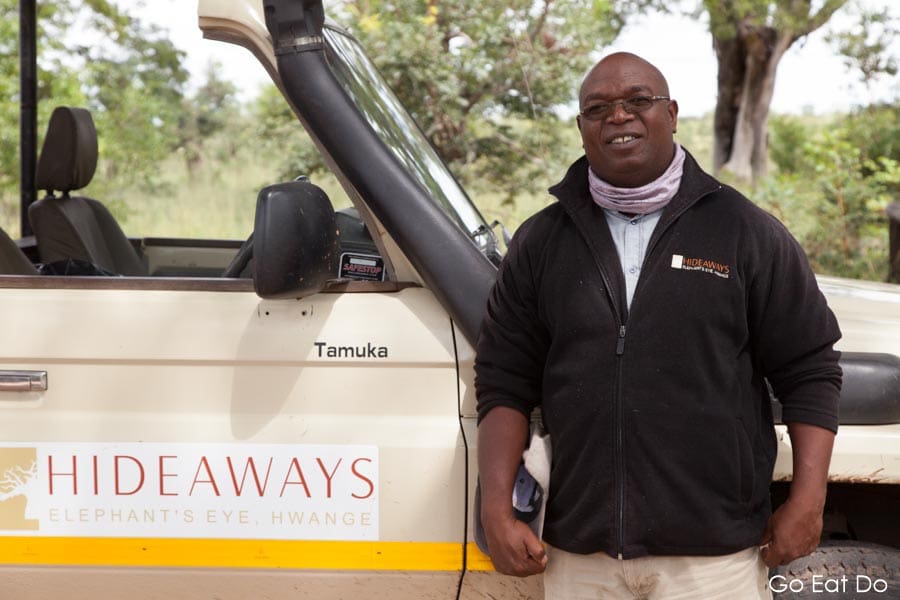
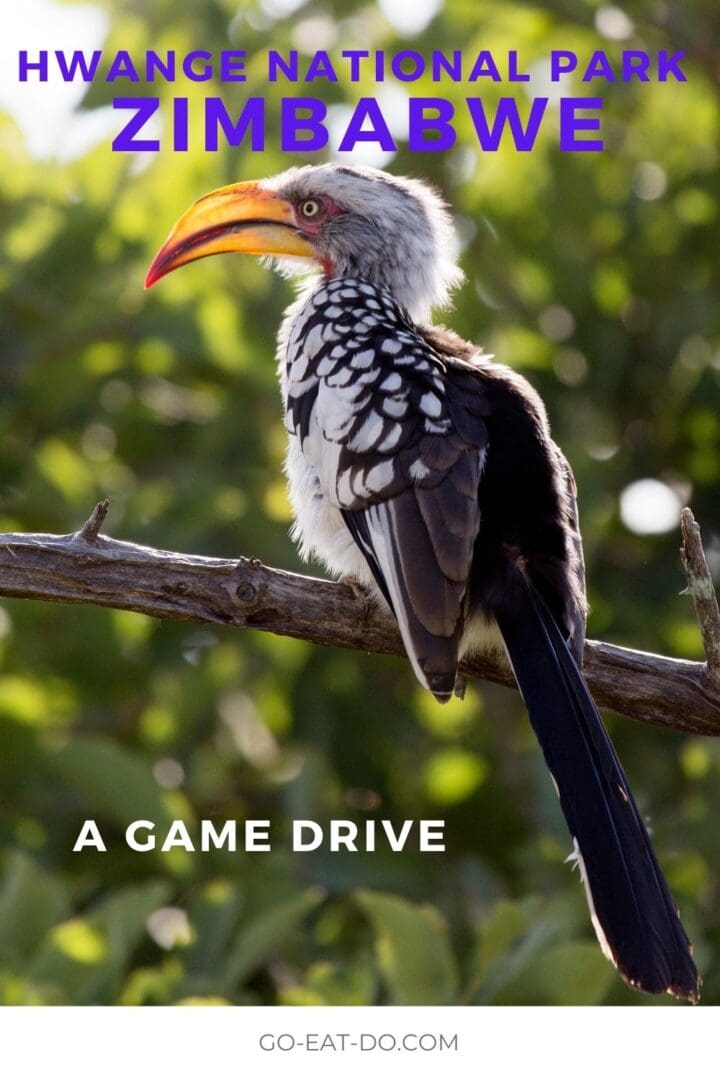
Hwange National Park
Hwange National Park was once a hunting ground for Matabele royalty. One of the reasons it exists in its current form is that the land was regarded unsuitable for agricultural use.
Covering 14,651 square kilometres, it has an area greater than either the European nation of Montenegro or the state of Maryland in the USA.
When the land was gazetted, back in 1928, it was called Wankie Game Reserve. The subsequent renaming has to be regarded as an example of successful rebranding. It was expanded into a national park upon absorbing Robins Game Sanctuary two years later.
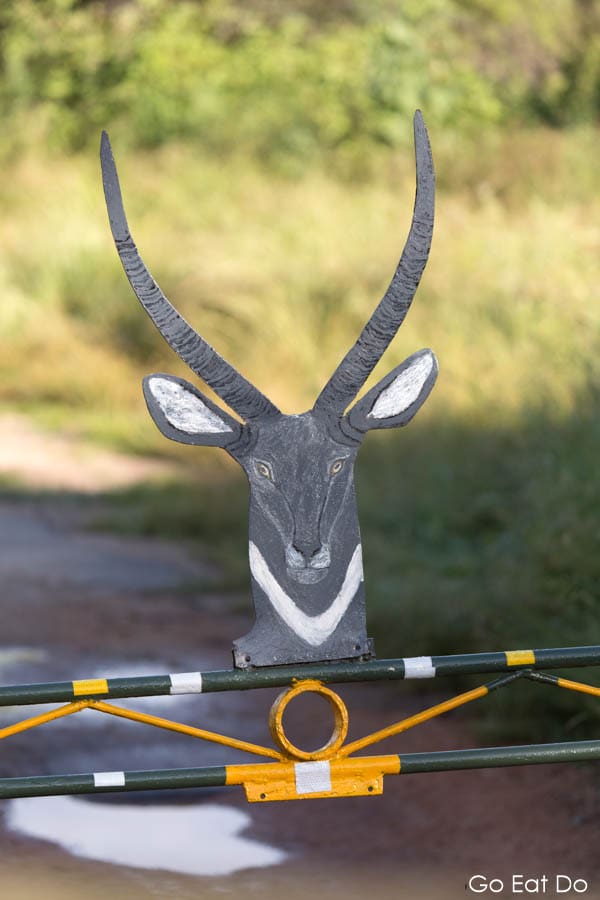
By the time we’d reached the park’s main gate, roughly half an hour’s drive from Elephant’s Eye, we’d already seen silhouetted baboons clambering on electricity pylons and the first of many southern yellow-billed hornbills. The bird’s sabre-like beak gives it a cumbersome, head-heavy appearance as it flies between acacia trees but proves effective in prising open seed pods for food.
A spotted hyena, normally a creature of the night, glared at us from the undergrowth. I couldn’t help interpreting his cold stare as a taunt at my inability to photograph effectively from our jolting, moving vehicle. Frustratingly, as soon as we came to halt and I could get a clean shot the animal sauntered out of view.
A game drive in Hwange National Park
The sun was low over the horizon by the time Shepherd started driving on Hwange’s sandy tracks, giving a golden glow to the foliage and abundance of birdlife we spotted. Small groups of francolins and guineafowl took turns to dart from the undergrowth into the path of the oncoming vehicle before scurrying, seemingly in panic, ahead of its slow-moving wheels.
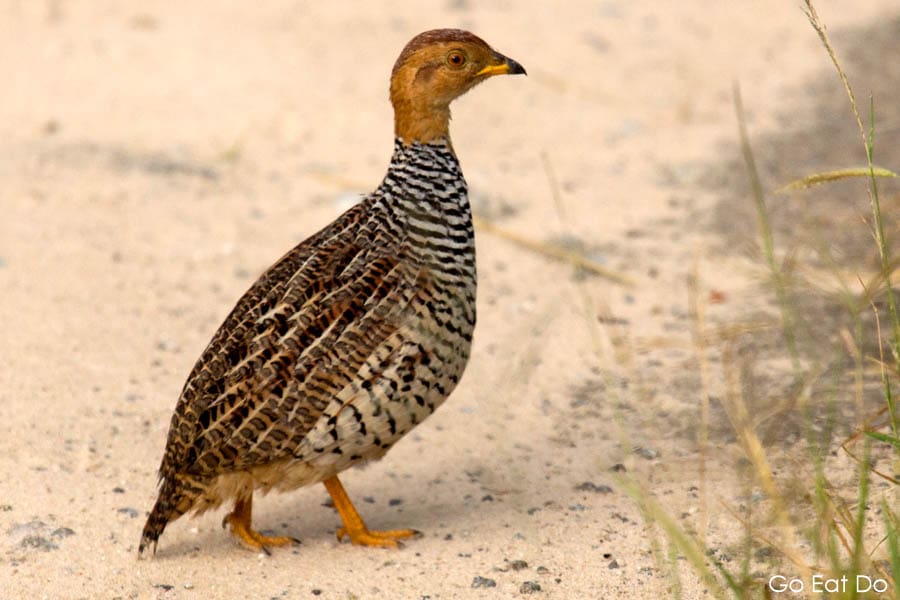
Intermittent rains fall in Hwange from February until April. The dense lushness of vegetation during the green season is a factor in mammal sightings being less frequent than during the dry season. Animals can find water throughout the park. For humans hoping to see wildlife and predators seeking prey, that has the disadvantage of meaning creatures don’t have to congregate at waterholes.
As we drove, miniature mountains of dung provided ample evidence that some of Hwange’s 20,000 elephants had preceded us. A pugmark was proof that a big cat had also been by in recent hours.
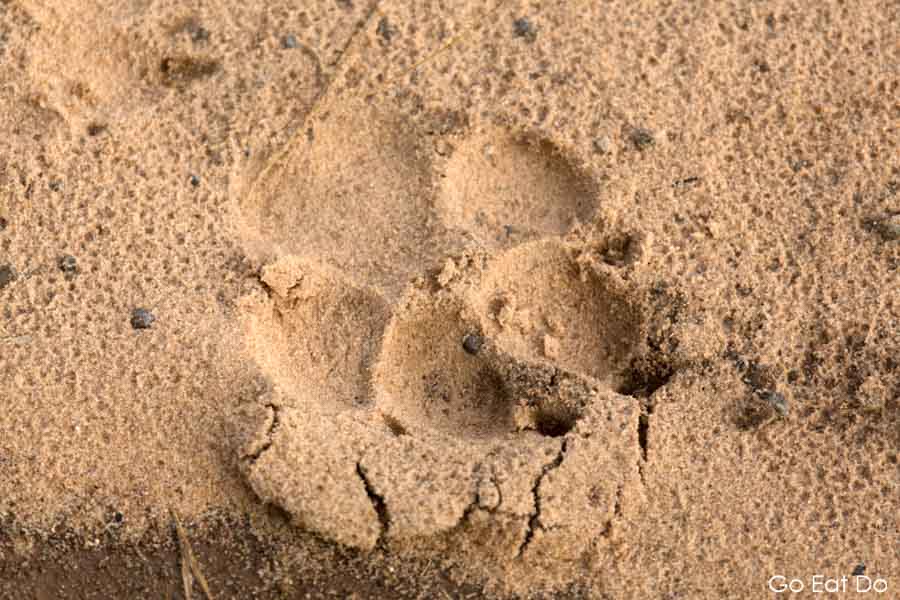
Through the branches of trees, we spotted the faces of a couple of giraffes. As they walked into a clearing our guide informed us that the collective noun for giraffes is a journey or tower. What is the term for people who think up such names?
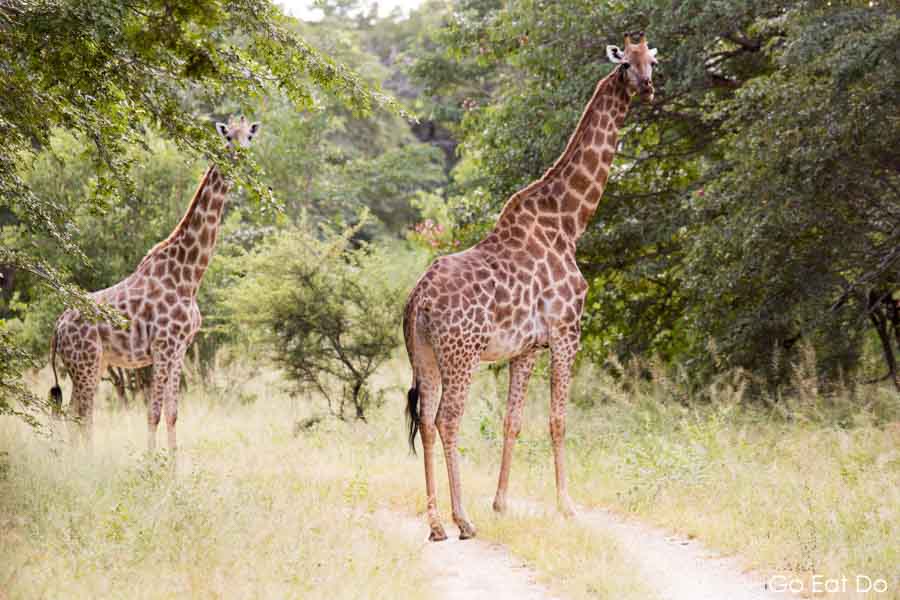
Bird watching in Zimbabwe
Shepherd pointed out a flock of Egyptian geese flying in the distance and a lone martial eagle wheeling in the sky. With a wingspan of up to 2.70 metres, the raptor is the biggest of Hwange’s birds.
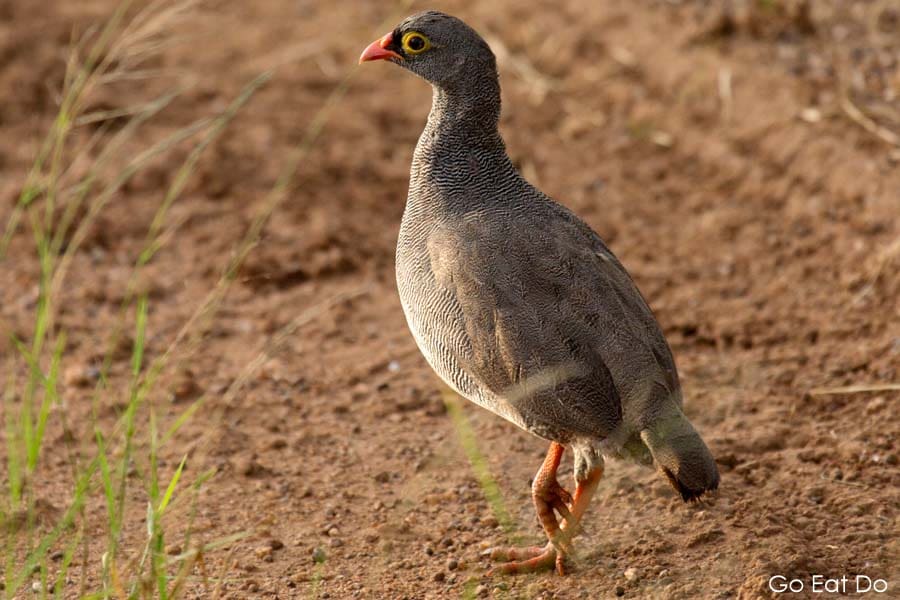
He explained that a concentration of circling lappet-faced vultures indicated the likelihood of a kill in the distance. Unfortunately, the park’s population of vultures has decreased markedly in recent years, due to poachers employing cyanide to poison elephants for their ivory. Despite efforts to stamp out the practice, poisoning entering the food chain has resulted in numerous deaths of carrion birds.
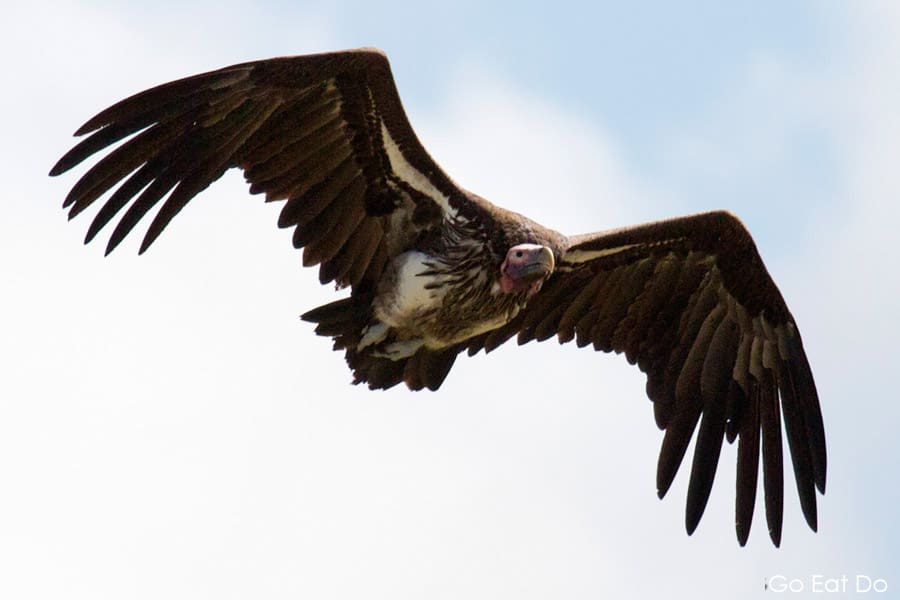
Even in the green season, the greatest gathering of wildlife was around the water of the Nyamandhlovu Pan. From the viewing tower there I spotted wildebeest, a yawning hippo, impala, zebras plus a semi-submerged croc. After all of that, we were somewhat blasé about spotting waterbucks in knee-length grass on the way back to Hwange’s main gate.
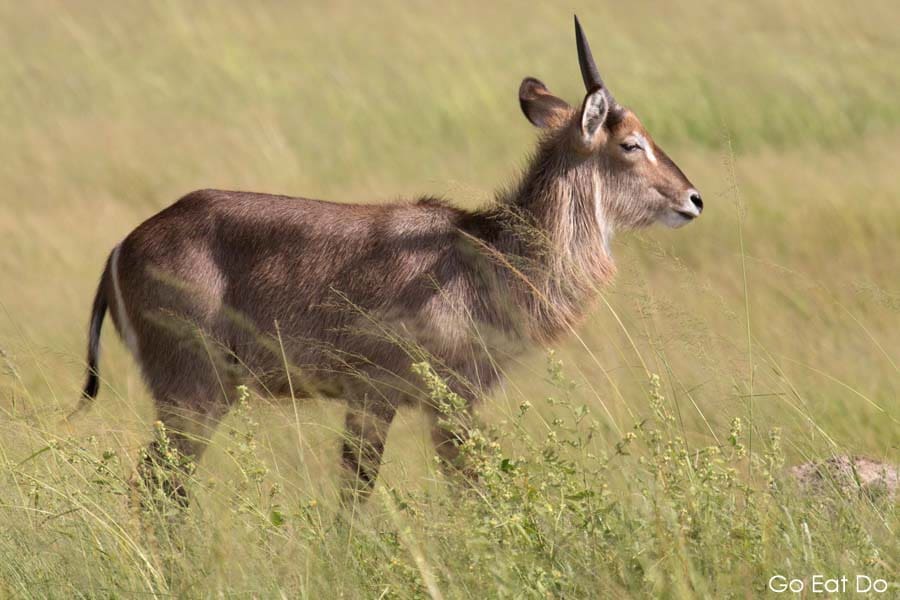
As we rolled along the tarmac back to Elephant’s Eye — and breakfast — I scrolled through my photos and nodded. The results weren’t at all bad given the time of year: the prospect of returning to Hwange National Park in the dry season is very tempting.
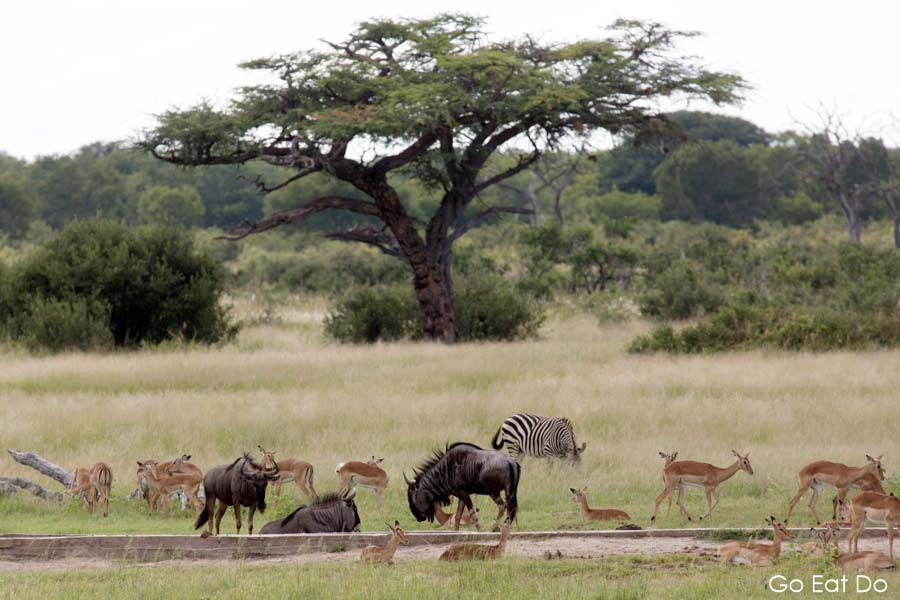
View wildlife and birds using Nikon binoculars:

How to get to Zimbabwe
Stuart flew to Zimbabwe as a guest of Rwandair. Rwandair operates flights from London Gatwick to Harare via its hub at Kigali International Airport in Rwanda, with a brief stop in Brussels.
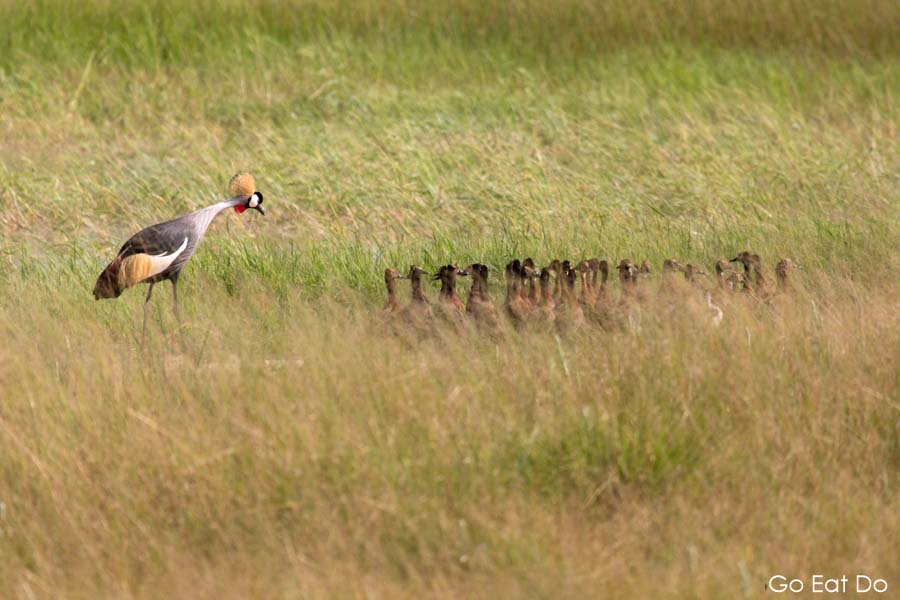
Books about Zimbabwe
Planning a trip to Zimbabwe. You may enjoy these books:
Alois S. Mlambo is the author of A History of Zimbabwe.
Looking for a travel guide? A useful source of information about the country is the Bradt Guide to Zimbabwe.
JR Stephens is the author of South African Cuisine: Recipes of Mozambique, South Africa, Swaziland, Zimbabwe.
Children’s Folk Tales from Zimbabwe.
Travel to Hwange National Park
Hwange National Park is approximately 2.5 hours’ drive southeast of Victoria Falls. The national park is roughly 3.5 hours’ drive northwest of Bulawayo, Zimbabwe’s second-largest city.
The Google Map below shows the location of Hwange National Park:
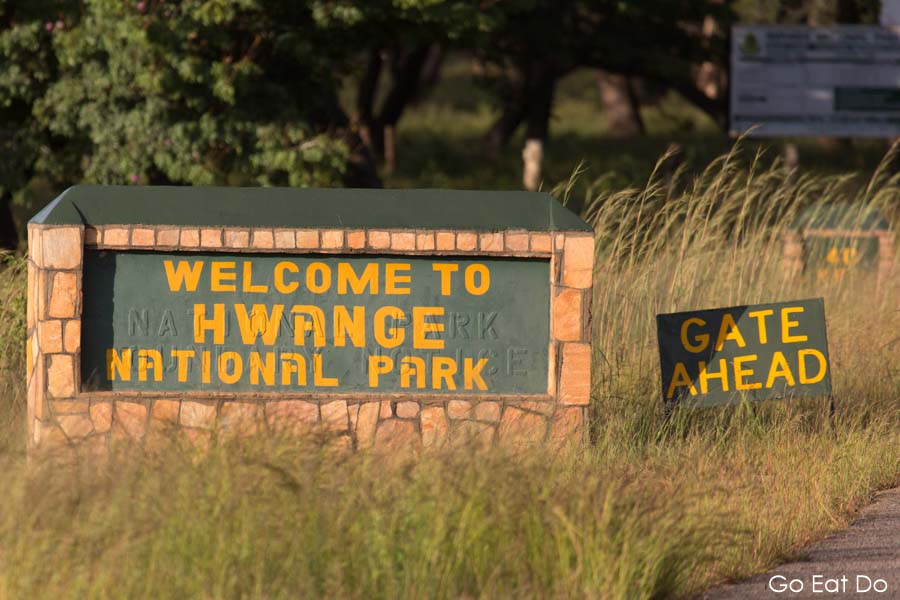
When to visit Zimbabwe
For wildlife viewing the best time to visit is during the dry season (from July into November). When the bush dries out it’s easier to spot animals, which tend to gather at waterholes.

Elephant’s Eye eco-lodge
Elephant’s Eye (tel. +27 (0) 21 671 7729) is a luxury eco-lodge set on a 6,000 private concession adjacent to Hwange National Park. The resort is close to the town of Dete and 13 kilometres from the park’s main gate.
Communal areas at Elephant’s Eye overlook one of two waterholes. That meant it was possible to view impala and warthogs while having a three-course dinner in the lodge’s open-sided dining room. Briefly, the resort’s compact pool was also used during that time: an elephant stopped by for a visit.
The property’s elevated huts overlook a plain, meaning it’s possible to sit in the bath or relax out on the veranda while viewing animals and bird life. I was informed that the waterholes at Elephant’s Eye have water throughout the year, making it a good place to view wildlife in the dry season.
See the Hideaways Africa website for information about the availability of accommodation at Elephant’s Eye.
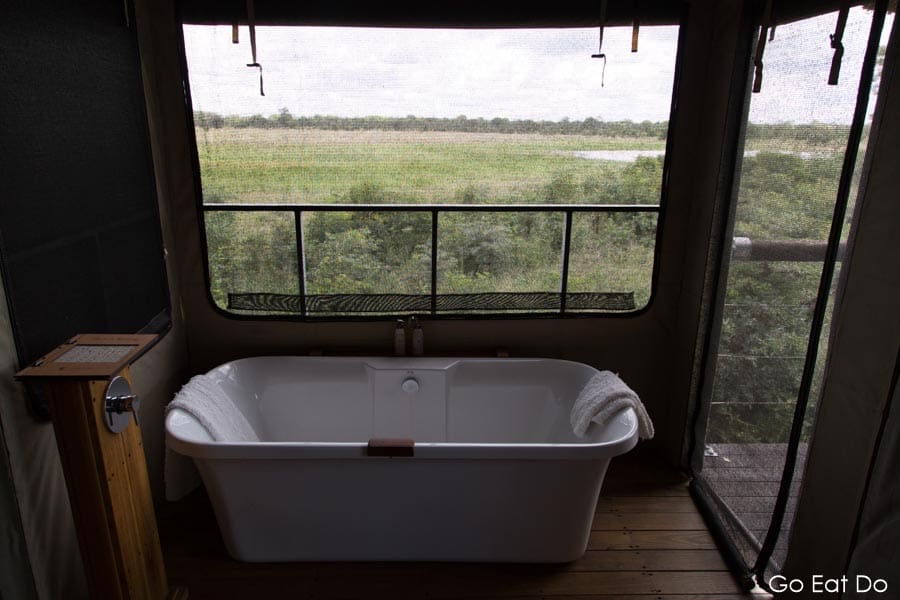
Further information
Find out more about Zimbabwe and its attractions via the Zimbabwe Tourism Authority website. The Zimbabwe Parks and Wildlife Management Authority website has information relevant to visiting Hwange National Park.
Thank you for visiting Go Eat Do and reading this post about a game drive in Hwange National Park, Zimbabwe. Check out this post about the experience of a rhino walk in Zimbabwe’s Matobo National Park.
Photography illustrating this post is by Why Eye Photography. Specialising in food, travel and portrait photography, Why Eye Photography is available for commissions across the United Kingdom and beyond.
Stuart Forster, the author of this post, is an award-winning travel writer. He has broad experience of writing about wildlife and ecotourism. He is available for editorial and commercial commissions.
If you enjoyed this post why not sign up for the free Go Eat Do newsletter? It’s a hassle-free way of getting links to posts on a monthly basis.
‘Like’ the Go Eat Do Facebook page to see more photos and content.
A version of this post was originally published on Go Eat Do on 9 April 2018.
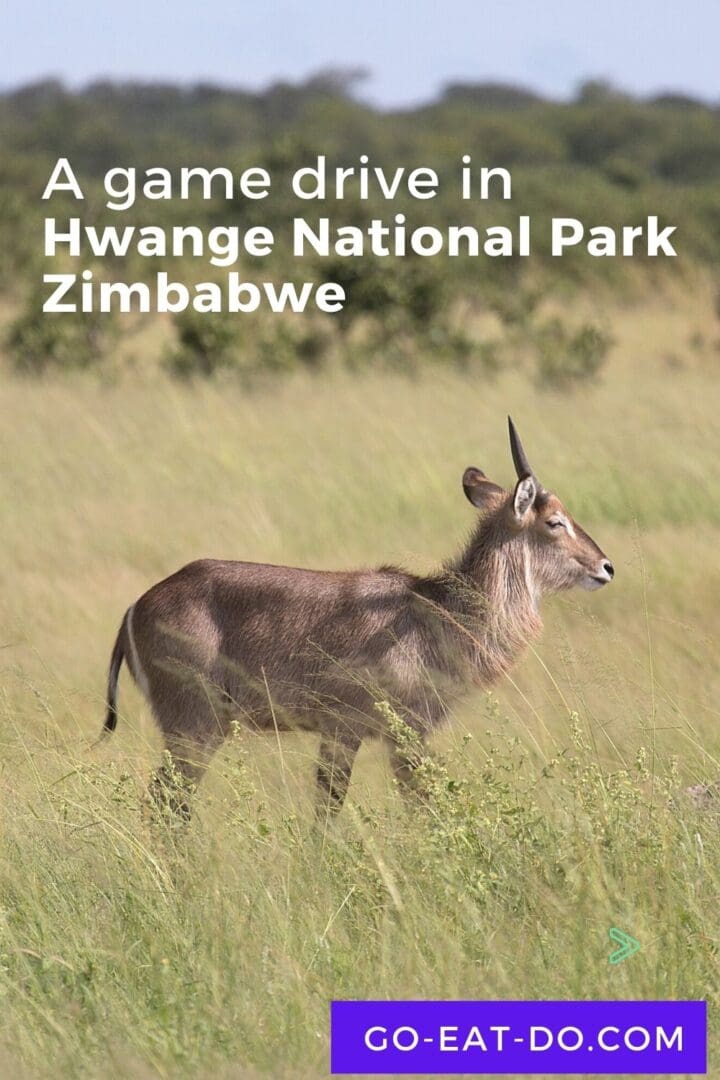
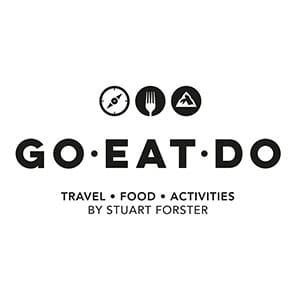



Felicia
April 10, 2018 at 05:01Excellent piece Stuart, covering one of our most amazing, premier wildlife parks. A place to visit for everyone from all over the world. Very stimulating and great platform for visitors to know more about Hwange National Park before they get there. Please come again. Thank you
Stuart Forster
April 10, 2018 at 10:17Thank you, Felicia. The park made a good impression and I noticed in Victoria Falls that people can take day trips to it, which may attract some travellers who are unable to stay in the vicinity of Hwange.
Sam | North East Family Fun Travel Blog
April 10, 2018 at 10:11Love your Hyena photo – it really is taunting you!
Stuart Forster
April 10, 2018 at 10:19As a photo it’s not my best but it was certainly a good sighting. Those creatures really do look mean.
Barry Stephen
April 10, 2018 at 13:06Looks like you spotted an impressive array of birdlife and a significant number of mammals while in the national park.
Stuart Forster
April 10, 2018 at 13:08Yes, given the season it was impressive. Seeing the hippo yawn was a personal highlight as I hadn’t spotted it in the water ahead of that.